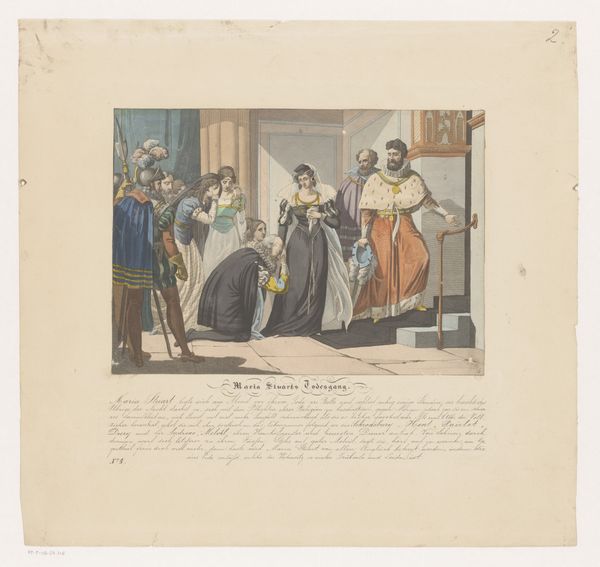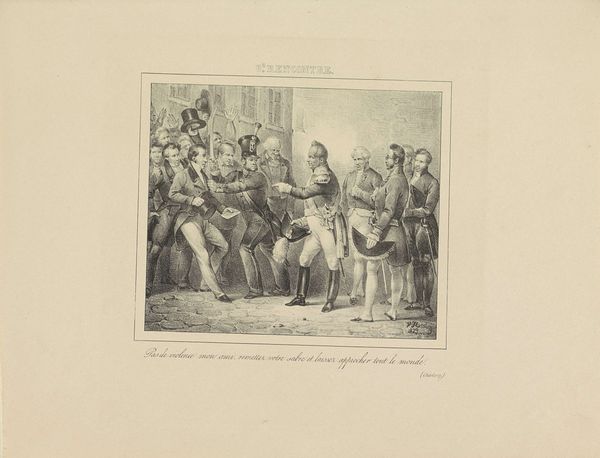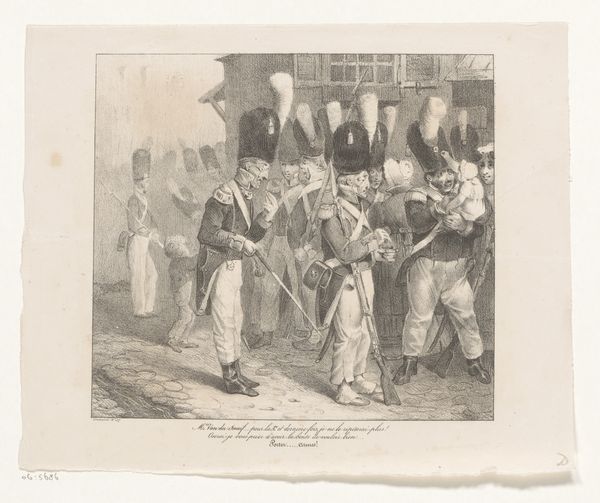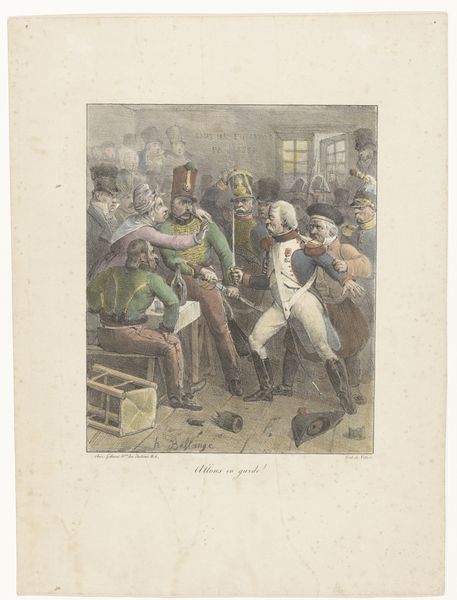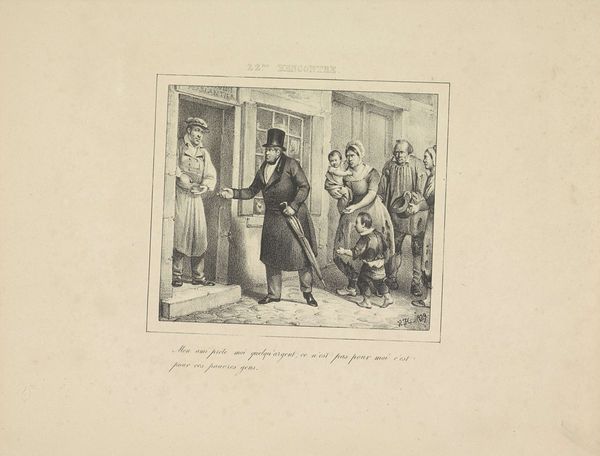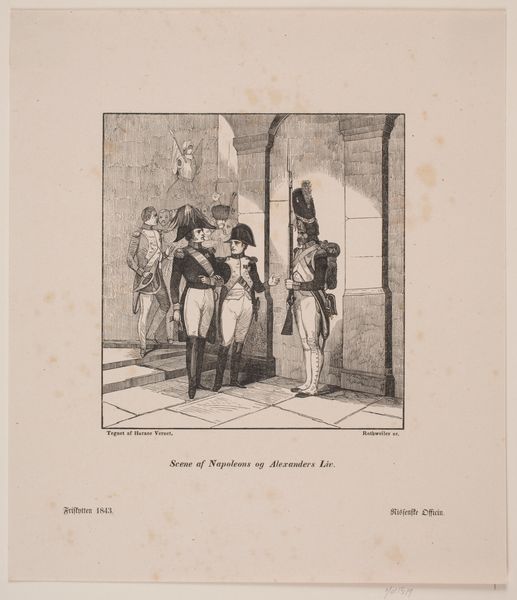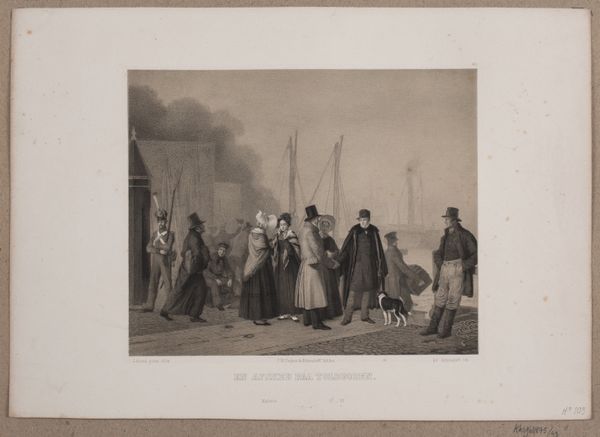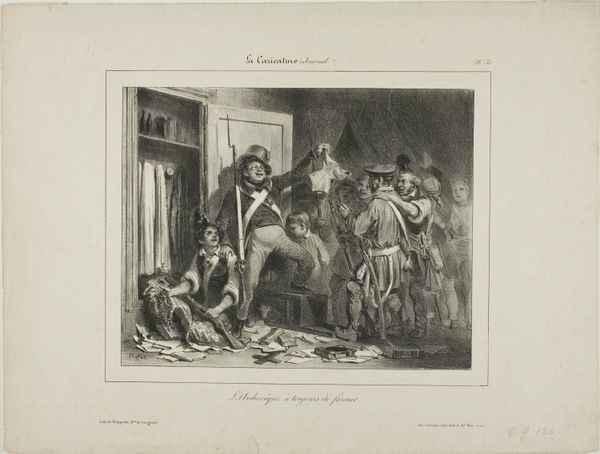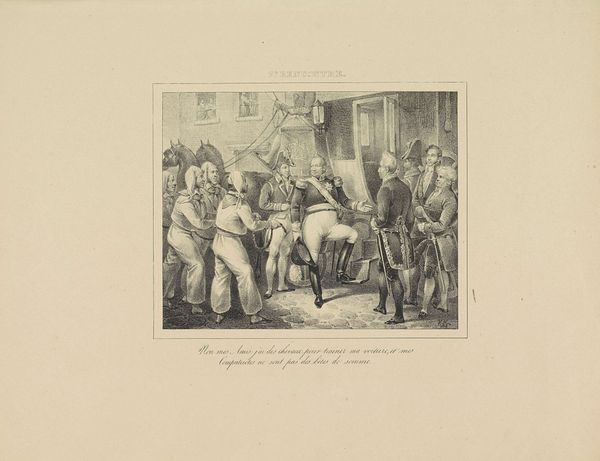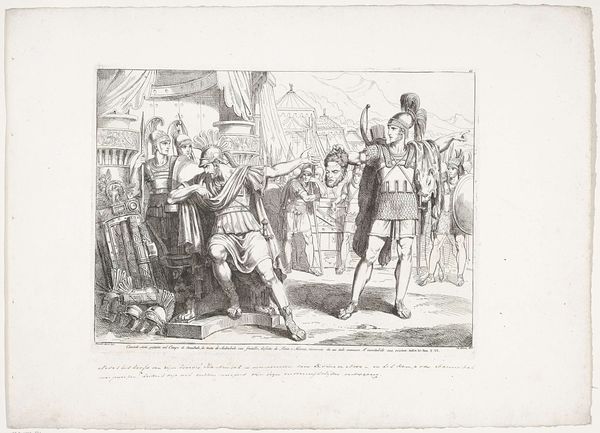
drawing, print, etching, paper, pencil, engraving
#
drawing
#
narrative-art
# print
#
etching
#
figuration
#
paper
#
form
#
romanticism
#
pencil
#
line
#
genre-painting
#
history-painting
#
engraving
#
realism
Dimensions: height 240 mm, width 312 mm
Copyright: Rijks Museum: Open Domain
Jean-Louis Van Hemelryck created this print in 1829, depicting King William I lending money to the poor. The printmaking process itself, in which a design is transferred to paper via an intermediary matrix, has long been associated with the democratization of images. Here, we see the use of etching and engraving with added hand coloring, processes rooted in skilled craftsmanship. It is a multiple, designed to be widely circulated. The labor is frontloaded in the creation of the plate, from which many impressions can be taken. The final result is a relatively inexpensive image, which in this case serves as a form of propaganda, presenting a carefully constructed view of the King as a benefactor to his people. Consider the labor involved not only in producing the print itself but also the broader social context it represents. The act of lending, the portrayal of poverty, and the role of the monarchy all speak to the complex economic and social structures of the time. It reminds us that even seemingly simple images can be deeply embedded in issues of labor, politics, and power.
Comments
No comments
Be the first to comment and join the conversation on the ultimate creative platform.
